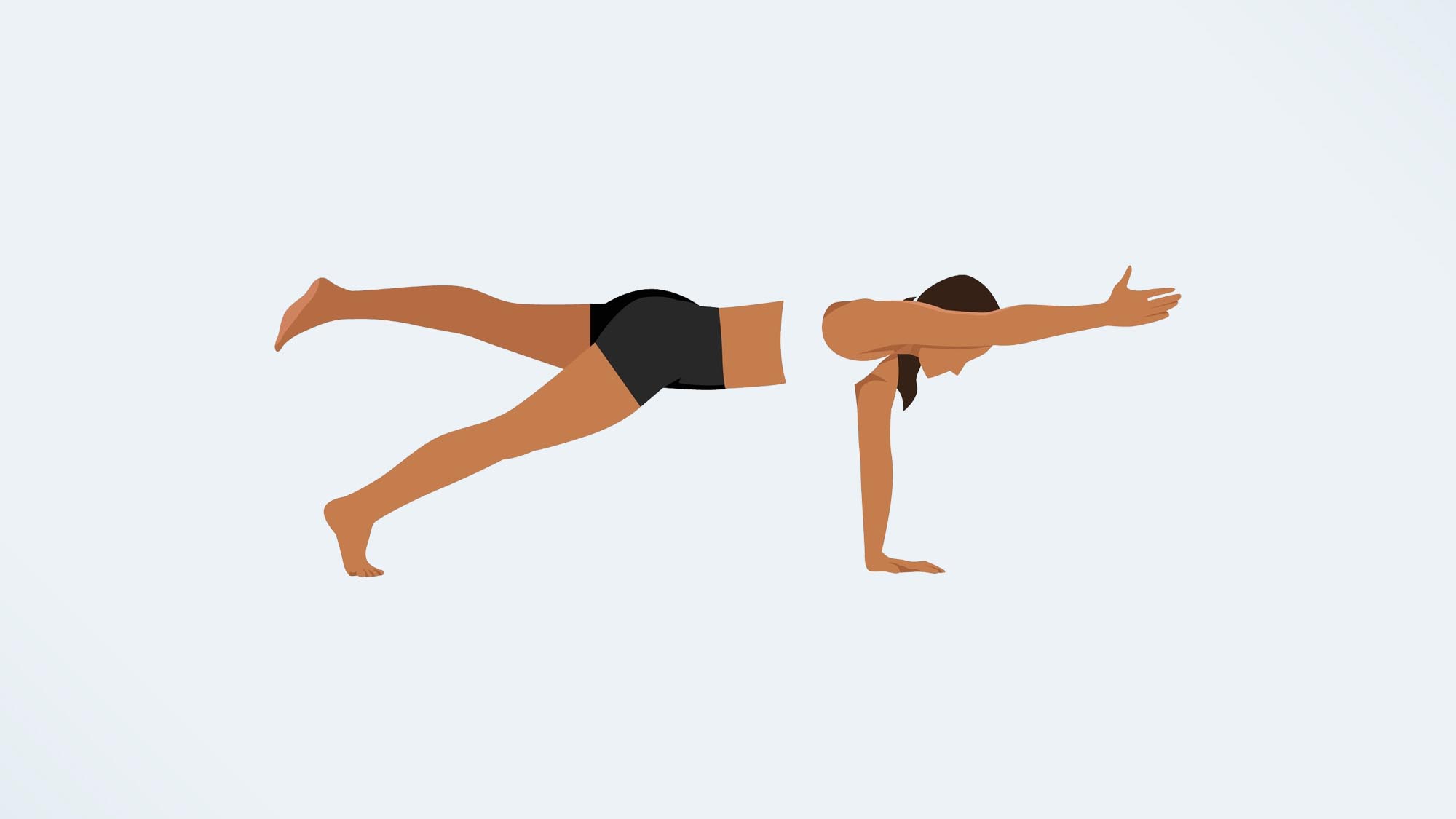I did the 3-legged plank every day for a week — here’s what happened
This one tests your arm strength as well as your core

There was a time when working on your core meant doing sit-ups, lots and lots of sit-ups. But while they’re effective, there is some risk of lower back or neck injury— an irony given that a strong core helps to prevent lower back injuries. Crunches are safer but more limited — they only work the core, while sit-ups bring other muscles into play. And so, along came the plank to save our backs and strengthen our entire core. Then came the variations, because, let’s be honest, the basic plank can become a bit dull after a while… say, 60 seconds. One of those modifications is the three-legged plank
What is the three-legged plank?
As with the X plank, which I tried recently, the three-legged plank will probably be familiar to those among you who practise yoga. In short, it’s a high plank with one limb raised, which is about as elegant as it sounds. It’s also known — rather prosaically — as “plank with leg lift”, which is like referring to the butterfly as “the super-splashy swim stroke”. You can also choose to raise one arm rather than one leg, which I tried during my week, for I am a conscientious and meticulous fitness guinea pig.
As with other plank variations, its works the core, but this one will also test your upper arms and shoulders, your back, chest, quads, and, if you choose, your glutes. It’s a lot of move for one move.
How do I do the three-legged plank?
I focused on raising one leg for most of the week, but even then, there are a couple of ways to do this exercise: from a high plank position, with arms straight; or from the standard plank position, with forearms on the floor. I focused on the high-plank position.
- Start off in the high plank, forming a straight line from head to feet. Make sure your arms are straight, and your elbows and hands are directly below your shoulders. Engage your core and brace your arms.
- Breathe in and raise one leg about five inches off the floor, keeping it straight. Look down, rather than ahead, to ensure you don’t strain your neck. Be careful to maintain a straight body line — don’t allow your hips to sag as you tire.
- Hold for a count of five and lower — remember to breathe as normal, as it’s tempting to hold your breath when you’re focused on a task that requires you to maintain a position. Repeat the move with the other leg. That’s one rep. Aim for 10 on each side and build up the seconds as you improve.

I did the three-legged plank for a week and this is what happened
Day one
I confess I didn’t expect much new from this move. Having done the X plank challenge, as well as the side plank, and because the regular plank has often been part of my fitness routine, I was foolishly confident as I got into position on day one.
Within seconds of raising my right leg, the move had put me straight. I felt it intensely in my lower abs, upper arms, and chest. It wasn’t that I was surprised by the intensity or difficulty of the move, but that it demanded work of so many muscles at once.
As I got to my feet, after three sets of 10 seconds on each leg, I noticed that my upper back was feeling most of the strain. I walked away a chastened man.
Get instant access to breaking news, the hottest reviews, great deals and helpful tips.
Day two
On day two, I felt the stress in my quads, and a greater effort from my chest muscles. As with day one, I did three sets on one leg before moving to the other. It was tough.
I also experimented with the leg raise. You don’t have to go high to get the effect — this is, after all, a move designed to primarily work the core — but if you raise the leg higher while keeping it straight, you’ll feel it in your glutes. That said, this move does enough as it is and raising the leg too high will put pressure on your lower back.
Day three
On day three, I alternated legs after each ten-second effort and found it much easier to complete the three sets with decent form — no sagging of the hips or arching of the back. If you can do this move with a mirror on one side, you’ll be able to keep an eye on your form. Raising a leg automatically gives your body a licence to bow a little — don’t let this happen.
Days four and five
The following day, I added five seconds to each rep on each leg. You may find yourself leaning back into your feet to take some of the stress off your arms, or leaning forward to give your arms more to do. The best bet is to find a balance so you spread the effort across your body.
For day five, I decided to try the move from the regular plank position, forearms down. This version ups the ante considerably. My lower, near-horizontal body position meant it was harder to raise my leg and keep it steady. If you’re finding the high-plank version a little too easy (I cheerfully admit I did not), try this one.
Day six
I mixed it up again on day six, doing the move with one arm raised. This was also more of a challenge, as it places great strain on the planted arm (the third leg, as it were). I felt this less in my core than I did in the loaded arm, and across my chest. Frankly, I was happy to finish the set.

Day seven
On the final day, I returned to high plank with a raised leg and comfortably added five more seconds to each set while maintaining form. The body’s ability to adapt quickly never ceases to amaze me.
The three-legged plank is, in all its variations, a terrific exercise. To keep things interesting, and to target a wider range of muscles, I recommend you use the three variations I tried during my challenge.
My next challenge is a week of table-top crunches and because I’ve already given my core a serious workout this week I’m sure they will pose no problems for me. In an unrelated matter, can anyone think of a word that rhymes with ‘hubris’? No idea why that just came to me.
More from Tom's Guide
- 7 best kettlebell ab exercises for strengthening your core muscles
- Forget sit-ups — this 4-move ab workout targets your deepest core muscles
- I tried Jennifer Aniston’s 15-15-15 workout — and loved it
John is a writer and editor based in London. He was worked for magazines such as Runner’s World, Men’s Health, Women’s Health and Cosmopolitan. A keen runner, what he lacks in ability he makes up for with enthusiasm and excuses.

